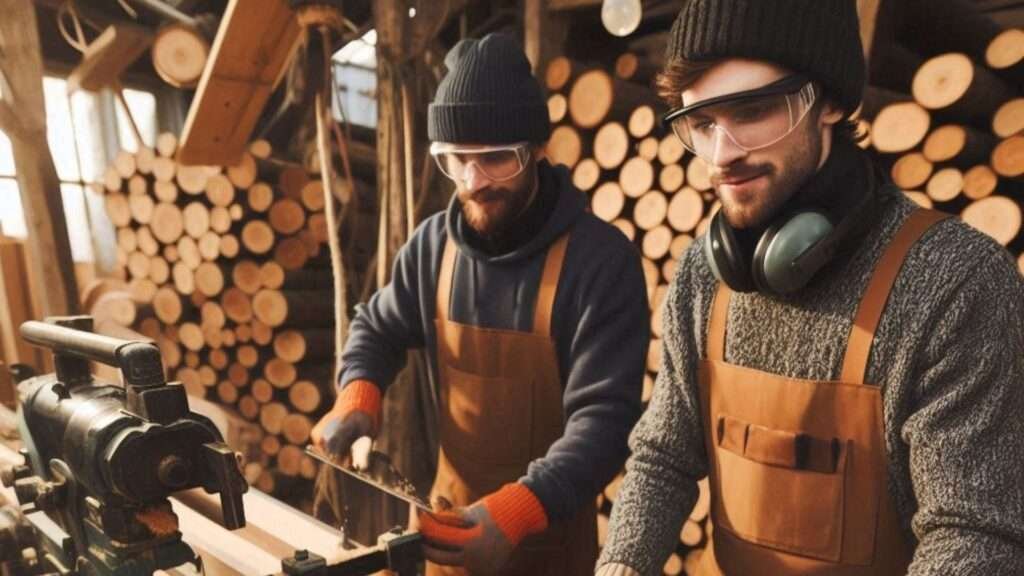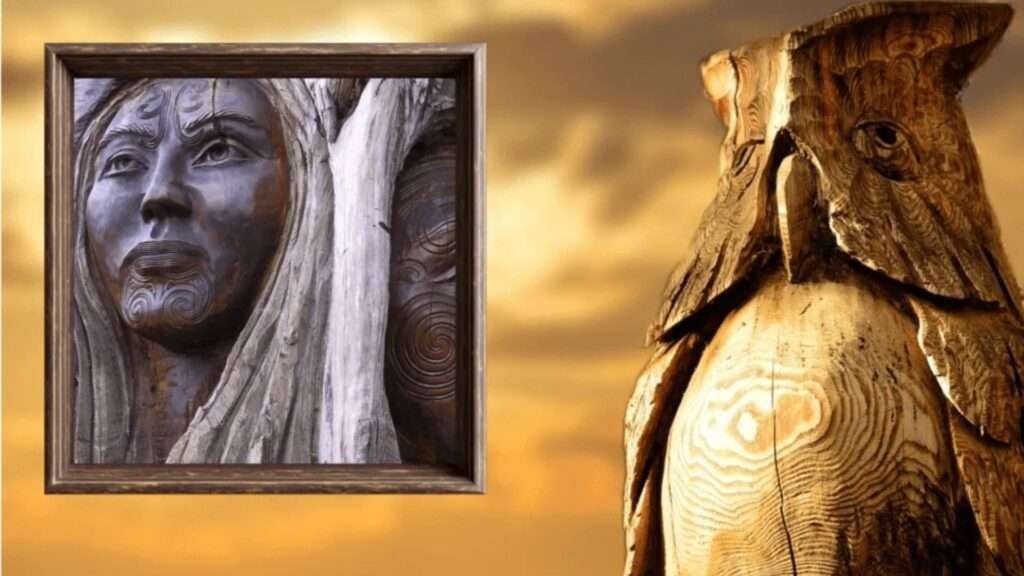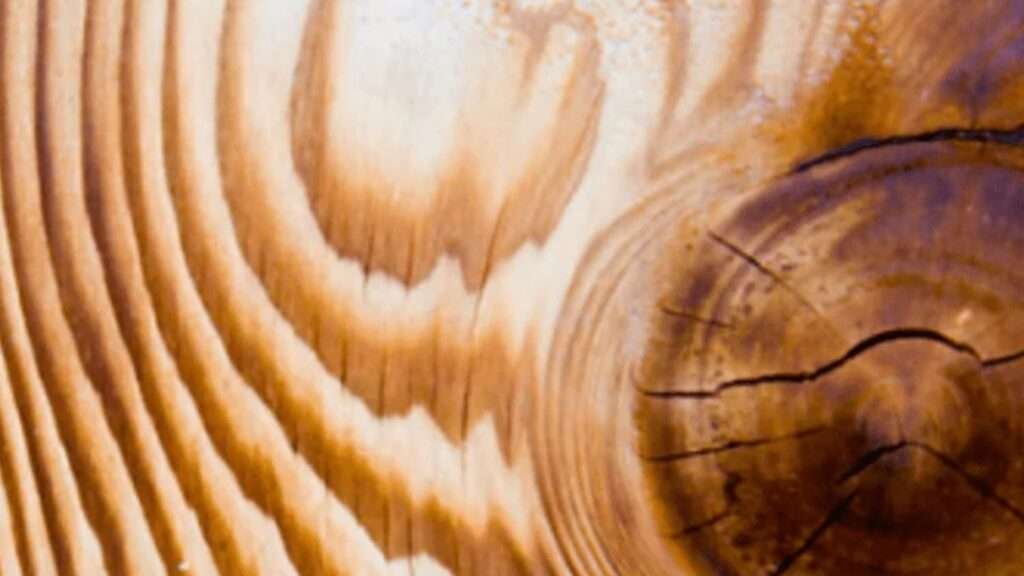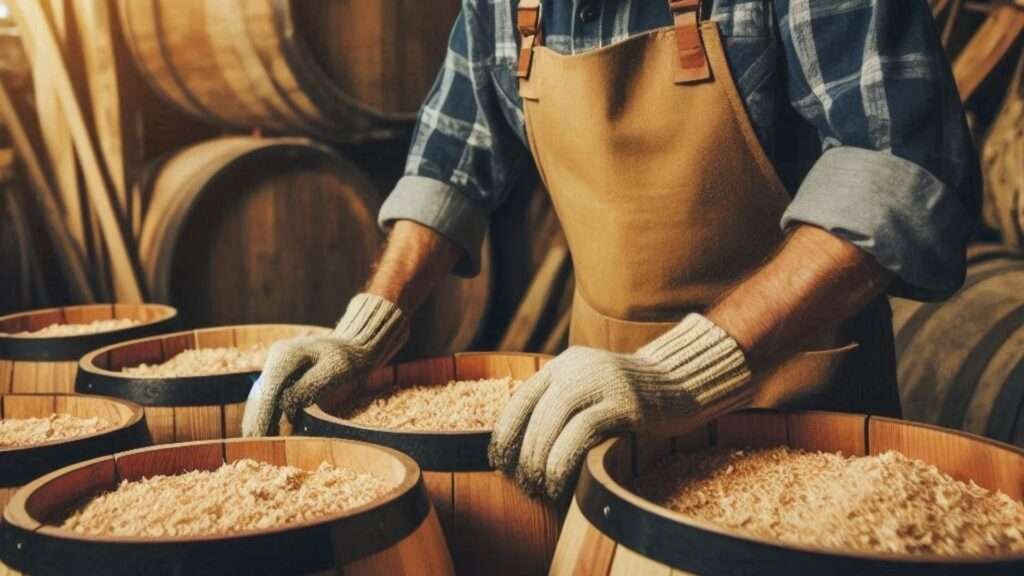The Potential of Using 'Fertilizer Trees Wood' for Woodworking.
Fertilizer trees are a distinctive group of tree species that are cultivated primarily for their remarkable ability to enhance soil quality.
These trees are integrated into agricultural systems with the specific aim of improving soil fertility, structure, and organic content, thereby supporting sustainable farming practices and boosting crop yields.
By incorporating fertilizer trees into their farming strategies, agriculturalists can significantly reduce their reliance on synthetic fertilizers, leading to more environmentally friendly and cost-effective farming.
Two common examples of fertilizer trees are the black locust (Robinia pseudoacacia) and the honey locust (Gleditsia triacanthos).
The black locust is renowned for its nitrogen-fixing capabilities, which enrich the soil with essential nutrients.
This species not only enhances soil fertility but also helps in preventing soil erosion due to its robust root system.
Similarly, the honey locust is valued for its ability to improve soil structure and organic content through its extensive root network and the organic matter it contributes to the soil upon leaf fall.
Fertilizer trees perform several vital functions in agro-forestry systems. They act as natural fertilizers by fixing atmospheric nitrogen into the soil, a process that is crucial for the growth of many plants.
Additionally, these trees provide organic matter through leaf litter, which decomposes and adds humus to the soil.
This organic matter improves soil structure, enhances moisture retention, and supports a diverse soil microflora, all of which are essential for healthy plant growth.
In essence, fertilizer trees represent a sustainable solution to soil management in agriculture.
Their ability to naturally enhance soil quality makes them an invaluable component of sustainable farming practices.
However, despite their numerous benefits in agriculture, utilizing wood from these trees in woodworking presents unique challenges, as will be further explored in the following sections of this article.
Characteristics of Black Locust and Honey Locust.
Black and honey locust are two prominent species known for their unique characteristics and beneficial contributions to soil health.
These trees exhibit distinctive growth habits and structural features, which make them valuable in various ecological and agricultural practices.
Black locust trees are renowned for their rapid growth and resilience, often reaching heights of 40 to 100 feet.
They possess compound leaves with 7 to 19 leaflets, which are oval and smooth-edged. The tree’s bark is deeply furrowed, providing a rugged appearance.
One of the most notable features of black locust trees is their ability to fix nitrogen in the soil through a symbiotic relationship with Rhizobium bacteria.
This nitrogen fixation capability significantly enriches the soil, making it more fertile and conducive to plant growth.
Honey locust trees, on the other hand, can grow up to 100 feet tall and are characterized by their thorny branches and pinnate leaves, which can have up to 28 leaflets.
The leaflets are smaller and more numerous compared to those of black locust trees. Honey locusts are also known for their large, twisted seed pods, which can be up to 18 inches long.
These pods decompose and add organic matter to the soil, further enhancing its quality. Additionally, honey locust trees have a deep root system that helps in soil aeration and stabilization, preventing erosion.
Both black locust and honey locust trees are preferred for soil improvement due to their nitrogen-fixing abilities and contribution to organic matter.
Their robust root systems and growth patterns aid in preventing soil erosion, while their leaf litter and decomposing pods improve soil structure and fertility.
These characteristics make them invaluable in agro-forestry and sustainable land management practices, where maintaining soil health is paramount.
Potential Uses of Fertilizer Tree Wood in Woodworking.
Even tough Fertilizer trees like black locust and honey locust, are primarily cultivated for their soil-enhancing properties, their wood also holds potential for various woodworking applications, offering both functional and aesthetic qualities.
Despite challenges related to availability and processing, the versatility of these types of wood makes them reasonably valuable resources for woodworkers.
Black locust wood, known for its exceptional durability and resistance to decay, is often used in outdoor structures such as fencing, decking, and garden furniture. Its natural resistance to pests and moisture makes it an ideal choice for projects exposed to the elements.
Additionally, the attractive light to medium brown colour and distinctive grain patterns of black locust add a rustic charm to any woodworking project.
Honey locust wood, on the other hand, offers a slightly different set of characteristics. It is generally lighter in colour, ranging from pale yellow to light brown, and features a straight grain with a coarse texture.
While not as durable as black locust, honey locust is still a hardwood with considerable strength, making it suitable for indoor applications such as furniture and flooring.
Its unique coloration and grain patterns can contribute to creating visually appealing pieces that stand out in any setting.
In furniture making, both black locust and honey locust wood can be utilized to craft robust and long-lasting pieces.
The dense, hard nature of these woods ensures that the furniture can withstand significant wear and tear, making them ideal for daily use.
Flooring made from these woods not only benefits from their durability but also adds natural beauty to interior spaces through their varied hues and grain structures.
Overall, while the primary purpose of fertilizer trees remains soil improvement, their wood can be effectively repurposed in a range of woodworking projects.
The aesthetic qualities, such as colour and grain patterns, combined with the inherent strength and durability of black locust and honey locust wood, open up numerous possibilities for creative and functional applications in woodworking.
Hardness and Density Challenges.
One significant drawback of using wood from fertilizer trees, such as black locust and honey locust, lies in their hardness and density.
These characteristics, while beneficial in certain contexts, present considerable challenges in woodworking.
The high density of these woods makes them particularly difficult to manipulate with standard woodworking tools.
Black locust, for instance, boasts a Janka hardness rating of approximately 1,700 lbf, while honey locust is not far behind with a rating around 1,580 lbf.
These figures far exceed the hardness of more commonly used woods like pine or even oak, posing a formidable challenge for woodworkers.
The increased hardness and density of these woods result in substantial wear and tear on equipment.
Blades and bits, for example, dull much faster when used on black locust or honey locust, necessitating more frequent sharpening or replacement.
Furthermore, the high density translates to increased resistance to cutting, which means that woodworking machinery such as saws, drills, and planers must exert more force to perform the same tasks they would on softer woods.
This added strain can reduce the lifespan of the machinery and increase maintenance costs.
Beyond equipment wear, the physical effort required to cut, shape, and finish wood from fertilizer trees is considerably higher.
Woodworkers often find that sawing through these dense materials is a more labour-intensive process, requiring greater precision and control to avoid damaging the wood or the tools.
Additionally, the finishing process can be more challenging, as the dense grain structure of these woods may resist sanding and polishing, making it difficult to achieve a smooth, even surface.
In essence, while the hardness and density of black locust and honey locust can confer benefits such as durability and resistance to decay, these same properties complicate their use in woodworking.
The additional strain on tools and the increased manual effort required can make these woods less appealing choices for certain projects, highlighting a key challenge in utilizing fertilizer trees for woodworking purposes.
Knots and Irregularities.
Fertilizer trees, while beneficial for soil enrichment and ecological balance, often exhibit irregular growth patterns that result in knots and other imperfections within the wood.
These knots are areas where branches once grew, creating dense, hardened spots that differ significantly from the surrounding wood in terms of texture and strength.
While these features may add character and uniqueness to the wood, they also pose significant challenges for woodworkers striving for smooth, uniform surfaces in their projects.
One of the primary difficulties presented by knots and irregularities is their impact on the structural integrity of the wood.
Knots can weaken the wood, making it more susceptible to splitting or breaking under stress. This can be particularly problematic in applications requiring precise cuts and joins, where even minor imperfections can compromise the overall stability of the piece.
Furthermore, the presence of knots often necessitates additional sanding and finishing efforts to achieve a polished appearance, increasing the time and labour involved in woodworking projects.
To work around these imperfections, woodworkers can employ several strategies. One approach is to carefully select and position the wood to minimize the visibility and impact of knots.
By cutting around or removing sections with prominent knots, craftsmen can preserve the aesthetic and structural integrity of their work.
Additionally, specialized tools and techniques, such as using a planer or router, can help smooth out irregular surfaces, making them more manageable.
Alternatively, woodworkers might choose to embrace these natural imperfections, incorporating them into the design as unique features.
Knots and irregularities can add visual interest and character to a piece, transforming potential flaws into focal points.
This approach requires a creative mindset and a willingness to adapt the design to the wood’s natural characteristics, but it can result in truly distinctive and one-of-a-kind creations.
In sum, while the knots and irregularities found in wood from fertilizer trees present notable challenges, they also offer opportunities for creativity and innovation in woodworking.
By understanding and adapting to these imperfections, craftsmen can produce work that not only meets structural and aesthetic standards but also celebrates the natural beauty and uniqueness of the wood.
Durability and Weather Resistance.
Despite the inherent challenges associated with using wood from fertilizer trees, their durability and resistance to weathering make them highly suitable for particular applications.
Among these trees, black locust (Robinia pseudoacacia) and honey locust (Gleditsia triacanthos) stand out for their remarkable resilience, particularly in outdoor settings.
Black locust wood is renowned for its extraordinary hardness and natural resistance to decay.
It surpasses many commonly used hardwoods in terms of longevity and weather resistance, making it an excellent choice for outdoor furniture, decking, and fencing.
The wood’s high density and natural oils contribute to its durability, allowing it to withstand harsh environmental conditions without significant degradation.
Similarly, honey locust wood exhibits commendable durability, though it is slightly less hardy than black locust.
Honey locust is often favoured for its aesthetic appeal, featuring a beautiful grain pattern and rich coloration.
Its durability, while slightly inferior to black locust, still makes it a viable option for outdoor applications such as park benches, garden structures, and pergolas.
The wood’s ability to resist rot and insect damage further enhances its suitability for these purposes.
When compared to more traditional woods like cedar, pine, and oak, both black locust and honey locust demonstrate superior resistance to weathering.
Cedar, while naturally resistant to decay, is softer and more prone to physical damage.
Pine requires treatment to enhance its weather resistance, and oak, though durable, is susceptible to moisture-related issues.
In contrast, the inherent properties of black locust and honey locust reduce the need for chemical treatments and maintenance, offering a more sustainable alternative.
Specific use cases highlight the advantages of these woods’ resilience. Black locust could be used for vineyard stakes and possibly even boat building, where long-term durability is paramount.
Honey locust could have many applications in urban landscaping and ornamental structures, where its combination of strength and visual appeal is highly valued.
The durability and weather resistance of these fertilizer trees make them indispensable in scenarios where longevity and minimal upkeep are critical.
Sustainability Considerations.
Utilizing wood from fertilizer trees presents notable environmental benefits, particularly in the realm of sustainable forestry practices.
Fertilizer trees can contribute to ecological conservation when their wood is repurposed for woodworking.
This approach aligns with the principles of sustainable forestry by promoting the efficient use of natural resources and minimizing waste.
Fertilizer trees, such as certain species of acacia and alder, are typically planted to improve soil fertility through nitrogen fixation.
These trees play a critical role in enhancing soil quality, reducing the need for synthetic fertilizers, and supporting biodiversity.
Once these trees have served their primary purpose, harvesting their wood for secondary uses, such as woodworking, ensures that their ecological value is maximized.
This practice not only supports sustainable land management but also reduces the pressure on forests traditionally used for timber production.
Moreover, repurposing wood from fertilizer trees can significantly contribute to waste reduction.
Trees grown for soil improvement are often left to decompose or are cleared away once they are no longer needed for their primary function.
By incorporating this wood into woodworking projects, we can divert it from being discarded, thereby reducing the overall environmental footprint.
This method exemplifies a circular economy approach, where resources are reused and recycled, minimizing waste and promoting sustainability.
In addition, the use of fertilizer tree wood can lead to a decrease in deforestation rates. By sourcing wood from trees already serving an agricultural or ecological purpose, the demand for logging in natural forests can be mitigated.
This practice supports the conservation of forest ecosystems, which are vital for maintaining biodiversity, regulating climate, and providing habitat for wildlife.
Incorporating wood from fertilizer trees into woodworking practices offers a range of sustainability benefits.
It aligns with ecological conservation efforts, supports sustainable forestry, reduces waste, and helps preserve natural forests.
By leveraging the multifunctional use of fertilizer trees, we can foster a more sustainable approach to woodworking and resource management.
Conclusion and Some Tips.
The use of wood from fertilizer trees, such as black locust and honey locust, in woodworking presents both notable challenges and significant benefits.
One of the primary obstacles woodworkers face is the inherent hardness of these types of wood.
Their high density can make cutting, shaping, and finishing more labor-intensive and demanding on tools.
Proper equipment maintenance, including frequent sharpening of blades and the use of carbide-tipped tools, can mitigate these difficulties.
Another challenge lies in managing the knots commonly found in these woods. Knots can weaken the wood’s structural integrity and complicate the woodworking process.
When working with black locust or honey locust, selecting boards with fewer knots and using techniques like epoxy resin filling can help maintain the strength and aesthetic quality of the finished product.
Despite these challenges, the durability and resistance to decay offered by these woods make them highly desirable for specific applications.
Black locust, for example, is excellent for outdoor projects such as decking, fencing, and garden furniture, where its natural rot resistance extends the lifespan of the structures.
Honey locust, with its unique grain patterns, can be a compelling choice for decorative pieces and fine furniture, adding visual interest and character to the finished work.
For woodworkers considering incorporating fertilizer tree wood into their projects, it is advisable to start with smaller, less complex projects to become accustomed to the wood’s characteristics.
Projects like cutting boards, small tables, or decorative panels can provide valuable experience in handling these materials.
Additionally, collaborating with other woodworkers or seeking advice from those with experience in using black locust or honey locust can offer practical insights and techniques tailored to these specific woods.
In summary, while the challenges of using wood from fertilizer trees in woodworking are considerable, the benefits of durability and unique aesthetic qualities can make these efforts worthwhile.
With proper preparation, careful selection, and appropriate techniques, woodworkers can successfully harness the potential of black locust and honey locust in their craft.








